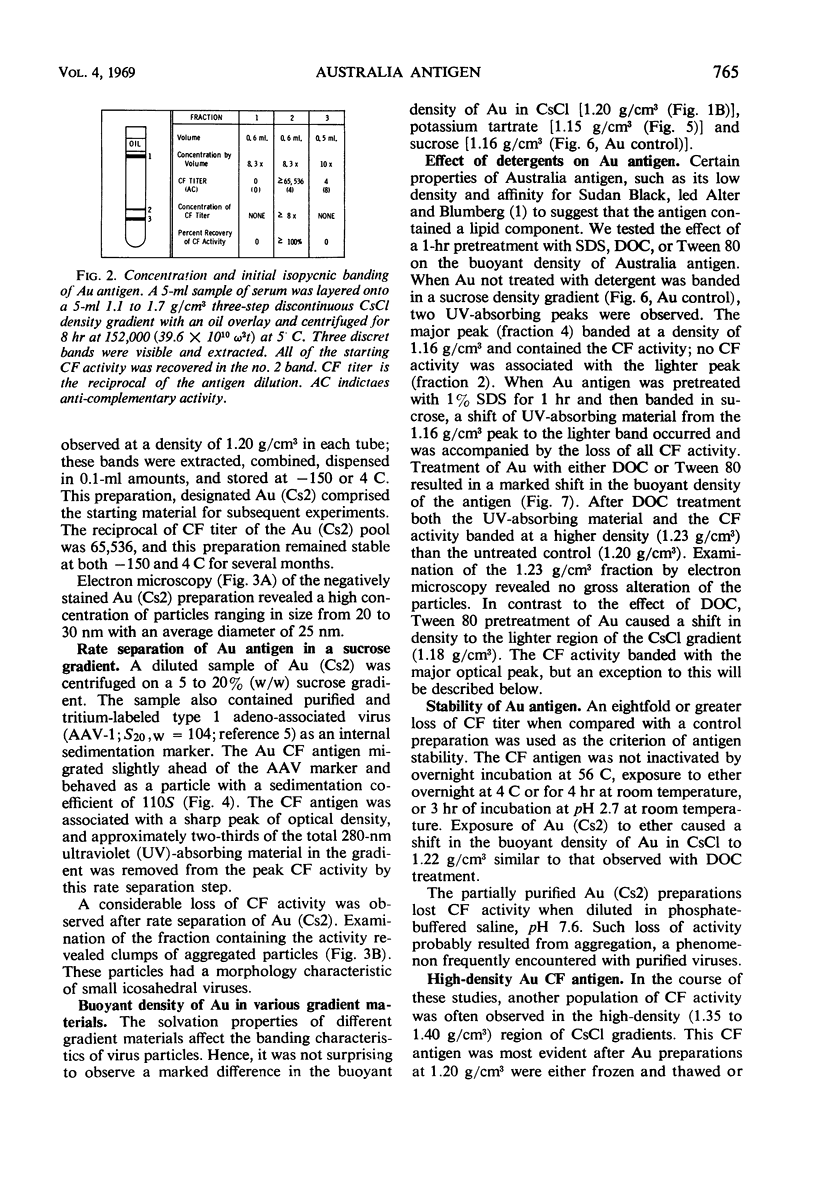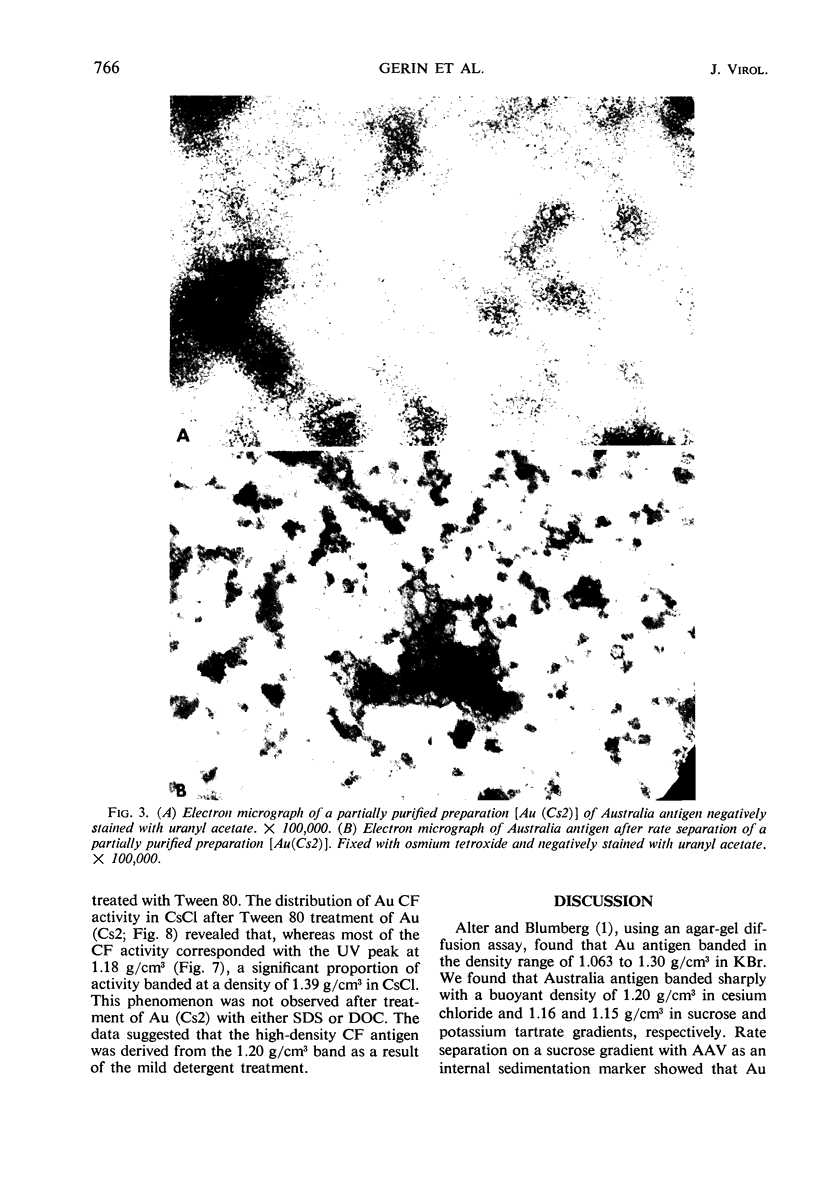Abstract
Biophysical studies with Australia complement-fixing (CF) antigen showed it to be a particle with a buoyant density of 1.20 g/cm3 in CsCl, a sedimentation coefficient of 110, and an average diameter of 25 nm. The CF antigen was not inactivated by ether, 1% deoxycholate, 1% Tween 80 or overnight heating at 56 C. The antigen was unstable when treated with 1% sodium dodecyl sulfate. A procedure is described for the isolation and partial purification of Australia antigen from serum by using isopycnic banding and rate separation techniques. Treatment of the 1.20 g/cm3 Australia antigen with 1% Tween 80 yielded a minor peak of CF activity with a buoyant density of 1.39 g/cm3 in CsCl.
Full text
PDF





Images in this article
Selected References
These references are in PubMed. This may not be the complete list of references from this article.
- Alter H. J., Blumberg B. S. Further studies on a "new" human isoprecipitin system (Australia antigen). Blood. 1966 Mar;27(3):297–309. [PubMed] [Google Scholar]
- Blumberg B. S., Gerstley B. J., Hungerford D. A., London W. T., Sutnick A. I. A serum antigen (Australia antigen) in Down's syndrome, leukemia, and hepatitis. Ann Intern Med. 1967 May;66(5):924–931. doi: 10.7326/0003-4819-66-5-924. [DOI] [PubMed] [Google Scholar]
- Blumberg B. S., Sutnick A. I., London W. T. Hepatitis and leukemia: their relation to Australia antigen. Bull N Y Acad Med. 1968 Dec;44(12):1566–1586. [PMC free article] [PubMed] [Google Scholar]
- Crawford L. V., Follett E. A., Burdon M. G., McGeoch D. J. The DNA of a minute virus of mice. J Gen Virol. 1969 Jan;4(1):37–46. doi: 10.1099/0022-1317-4-1-37. [DOI] [PubMed] [Google Scholar]
- Gocke D. J., Kavey N. B. Hepatitis antigen. Correlation with disease and infectivity of blood-donors. Lancet. 1969 May 31;1(7605):1055–1059. doi: 10.1016/s0140-6736(69)91701-2. [DOI] [PubMed] [Google Scholar]
- Hirschman R. J., Shulman N. R., Barker L. F., Smith K. O. Virus-like particles in sera of patients with infectious and serum hepatitis. JAMA. 1969 Jun 2;208(9):1667–1670. [PubMed] [Google Scholar]
- Prince A. M. An antigen detected in the blood during the incubation period of serum hepatitis. Proc Natl Acad Sci U S A. 1968 Jul;60(3):814–821. doi: 10.1073/pnas.60.3.814. [DOI] [PMC free article] [PubMed] [Google Scholar]
- Purcell R. H., Holland P. V., Walsh J. H., Wong D. C., Morrow A. G., Chanock R. M. A complement-fixation test for measuring Australia antigen and antibody. J Infect Dis. 1969 Sep;120(3):383–386. doi: 10.1093/infdis/120.3.383. [DOI] [PubMed] [Google Scholar]
- SEVER J. L. Application of a microtechnique to viral serological investigations. J Immunol. 1962 Mar;88:320–329. [PubMed] [Google Scholar]



